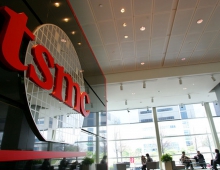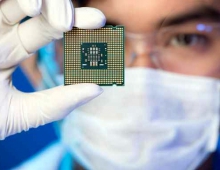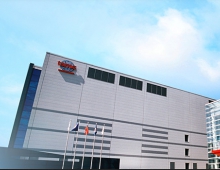
TSMC Q2 Sales Slowed as Industry Expects the iPhone Launch
Taiwan Semiconductor Manufacturing Company (TSMC) posted second-quarter profit that missed estimates, ahead of a 10th-anniversary iPhone -- one of the year's most-anticipated gadgets.
The Taiwanese maker of the iPhone's processors reported net profits of NT$66.27 billion (US$2.18 billion) on consolidated revenues of NT$213.86 billion for the second quarter of 2017. Net profits for the second quarter represented decreases of 24.4% sequentially and 8.6% on year, with EPS falling to a 5-quarter low of NT$2.56.
TSMC's revenues for the second quarter of 2017 were 8.6% lower than the prior quarter and 3.6% below year-ago levels, but met the company's estimate.
Shipments of TSMC's 10nm chips accounted for about 1% of the foundry's total wafer revenues in the second quarter, while shipments of the company's 16nm and 20nm chips accounted for a combined 26%. Advanced technologies, defined as 28nm and more advanced process technologies, accounted for a combined 54% of the foundry's total wafer revenues in the second quarter.
In March, rival Samsung announced its first 10-nm products, including the company's Exynos 8895 SoC as well as Qualcomm's Snapdragon 835.
TSMC kicked off mass production of its latest 10-nanometer A11 processors in June, which is expected to contribute as much as 10 percent of its revenue by the third quarter.
The company may gain an advantage over Samsung at the 7-nm node a year from now. The company said its 7nm yield is ahead of schedule and it expects a fast ramp in 2018. TSMC plans to insert several extreme ultraviolet (EUV) layers at 7 nm, but declined to provide details. The company also plans to offer a 7nm plus node that it expects will allow customers easy migration from 7 nm.
The company forecasts third-quarter sales of $8.12 billion to $8.22 billion, short of the $8.6 billion projected by analysts.
Investors had been counting on a flurry of semiconductor orders ahead of the launch of Apple's latest device, typically around September or October. The U.S. company is TSMC's biggest customer, accounting for about 17 percent of revenue. At the same time, global smartphone demand is expected to recover in 2017 from last year's record slump, led by Android phonemakers such as Huawei, a TSMC customer that ranks third in global device sales.
"In addition to supply chain inventory management and mobile product seasonality, the continuing unfavorable exchange rate further impacted our second quarter business," said Lora Ho, SVP and CFO of TSMC. "Moving into third quarter, we expect our business will benefit from new product launches of TSMC 10-nanometer mobile devices."
TSMC also aims to offer 12 nm products based on its 16 nm technology after it completes 12 nm development work in the second half of this year. The 12 nm technology will be an "optical shrink" of 16 nm, which will allow customers to convert existing 16 nm designs easily.





















